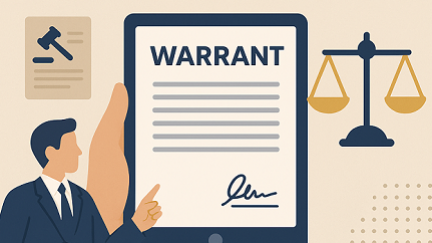The legal system is getting a serious technology upgrade, and it’s not just about fancy courtroom screens or online case tracking. The real game-changer? The rise of the e-warrant system.
From Paper Trails to Digital Speedways
Once upon a time, getting a warrant meant a whole lot of paperwork, phone calls, and waiting around. Picture this: a cop pulls over a suspected drunk driver, but needs a Blood Search Warrant to test their blood alcohol level. The officer would have to call a judge, fax documents (yes, fax!), and wait for approval. Meanwhile, the suspect sobers up, and crucial evidence slips away. Now? With the e-warrant system, officers can submit requests digitally—often from their patrol car—and get approval in minutes. No more chasing judges across town or dealing with jammed fax machines. It’s like going from snail mail to instant messaging.
What’s an E-Warrant Anyway?
An e-warrant is just what it sounds like: a warrant issued electronically. But don’t let the simplicity fool you—it’s revolutionizing how justice is served. Here’s how it works:
1. Digital Submission: Law enforcement fills out a warrant request on a secure platform.
2. Real-Time Review: A judge reviews and signs off electronically.
3. Instant Access: The approved warrant is sent back to the officer, ready for action.
Blood Search Warrants: A Case in Point
Let’s zoom in on one of the most impactful uses—Blood Search Warrants. These are typically used in DUI cases, where timing is everything. Alcohol levels drop fast, and delays can mean the difference between conviction and acquittal. Thanks to e-warrants:
• Officers can request a blood draw within minutes of a traffic stop.
• Judges can approve warrants even after hours, from their tablets or laptops.
• Evidence is preserved, and justice isn’t left hanging.
Benefits of the e-warrant system in LA:
• Speed: Faster approvals mean quicker action.
• Transparency: Digital records reduce errors and improve accountability.
• Accessibility: Judges and officers can work remotely, even during emergencies.
But Wait—Is It All Sunshine and Smooth Sailing?
Not quite. Like any technology shift, there are growing pains. Some critics are concerned about privacy, data security, and overreliance on automation. Others ask: Can digital systems truly replace human judgment? Still, the momentum is undeniable. With more departments hopping on board, the e-warrant system is becoming the new normal.
Conclusion: Justice at the Speed of Technology
In a city known for innovation and reinvention, it’s no surprise that LA’s legal system is embracing the digital age. From Blood Search Warrants to broader criminal investigations, e-warrants are reshaping how justice is delivered—faster, smarter, and with fewer hiccups.







